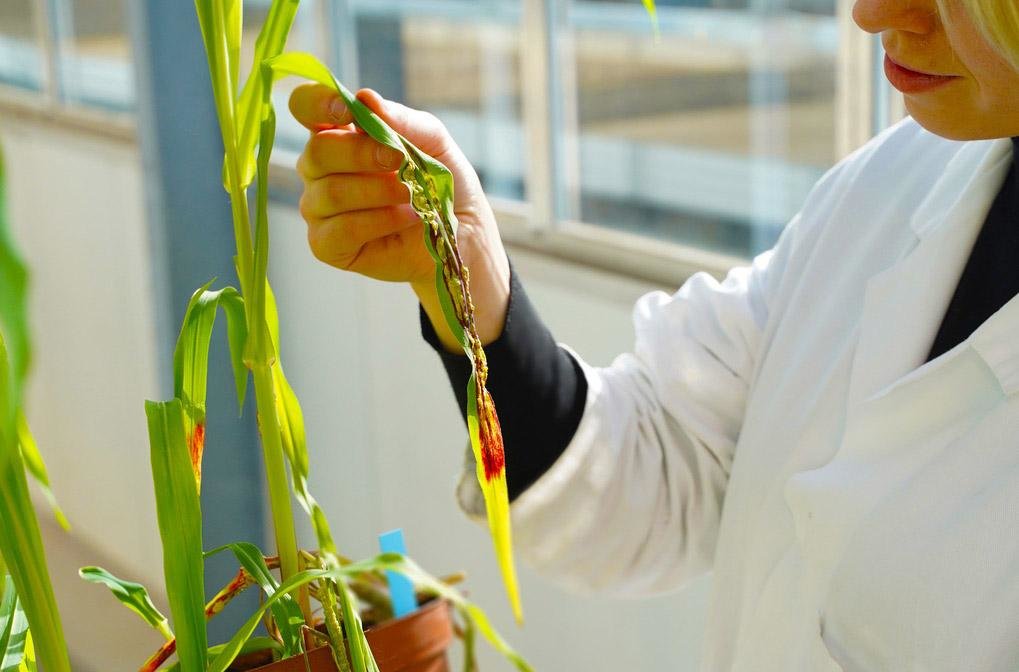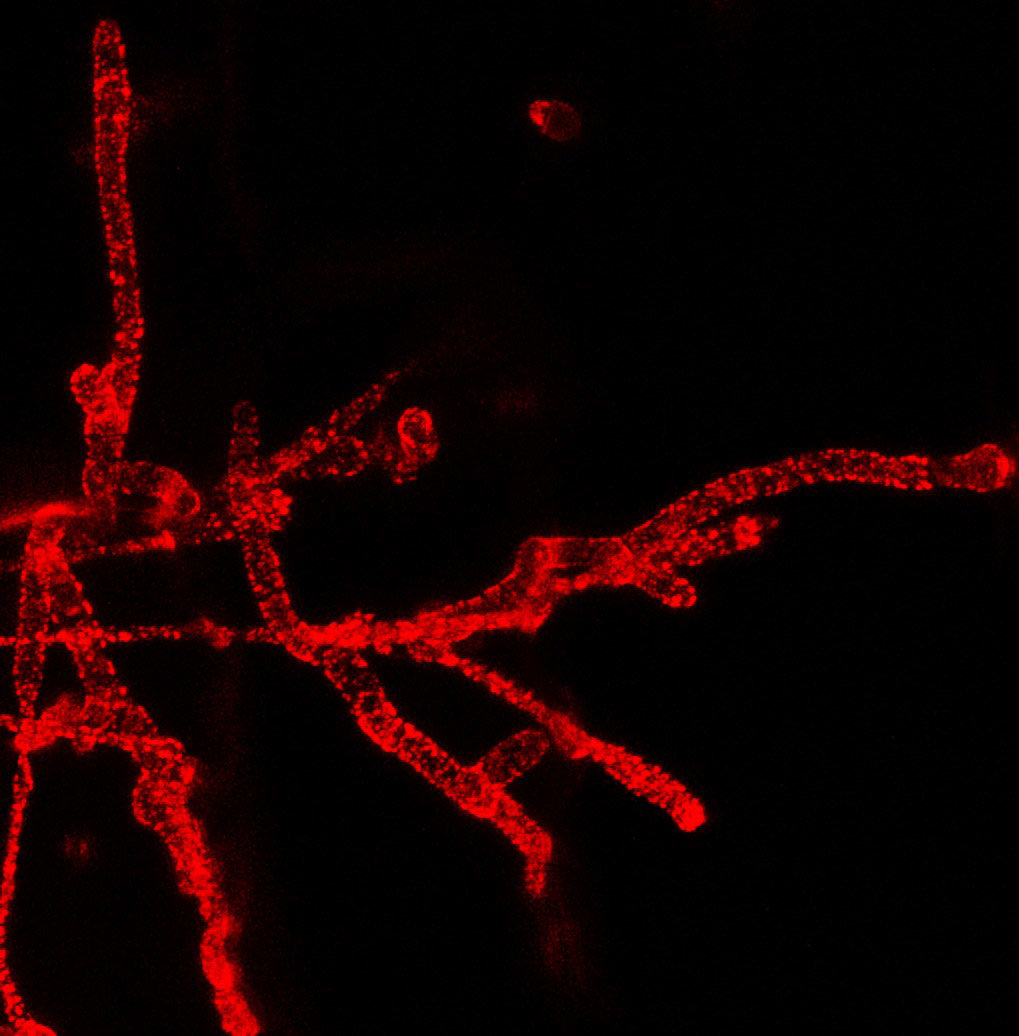Germany
May 3, 2021
To infect its host plant maize, the fungal parasite Ustilago maydis uses a complex of seven proteins. Numerous findings reveal an essential role of the complex in causing disease and suggest a widespread occurence in fungal plant pathogens.

Disease symptoms on the leaf of an Ustilago maydis infected maize plant. - © MPI f. Terrestrial Microbiology/ Geisel
Each year, fungal plant pathogens such as rusts, rice blast and mildews destroy huge amounts of cereal crops that could feed millions of people. Many of these fungi are biotrophic pathogens: Instead of killing their host plants, they manipulate host cells to assure that these sustain fungal growth. Among these pathogens, the corn smut fungus Ustilago maydis has emerged as a model for basic research on biotrophic fungi.
During the infection, U. maydis releases an entire cocktail of so-called effectors which function either in the interaction zone between fungus and host or are delivered to plant cells. Effector proteins suppress plant immunity, alter plant biosynthesis pathways and re-initiate cell division in leaf tissue, leading to prominent tumor-like structures from which the fungus spreads its spores. At present, the mechanism how effectors of plant-pathogenic fungi end up in plant cells remains a mystery.
Over many years, researchers around Regine Kahmann at the Max Planck Institute for Terrestrial Microbiology have worked on elucidating the molecular function of effectors. In the present study they have identified five fungal effectors plus two transmembrane proteins, which form a stable protein complex. If only one of these seven proteins is missing, the infection process stops entirely. Such a strong contribution to virulence is highly unusual for effectors which individually usually have only a modest contribution to virulence. Mutants lacking complex members fail to downregulate host immunity, suggesting an involvement of the complex in effector delivery. Localization experiments in part conducted with collaboration partners in the US and at the Philipps-Universität in Marburg revealed that complex proteins reside in structures extending from the fungus into host cells.
Essential for infection

Ustilago maydis hyphae inside an infected maize leaf. The red spots are caused by a fluorescent protein that is fused to one of the proteins in the surface-exposed complex. - © Max Planck Institute for Terrestrial Microbiology/Kahmann
These and other findings together with the observation that the expression of the complex is co-regulated with the infection process point towards a central, if not universal role of the protein complex. “We consider it likely that the effector complex in fact acts as a transmembrane structure that helps pathogens to deliver effector proteins into host cells”, says Regine Kahmann. “Such devices are well known from bacteria, but not from fungi so far.”
However, direct proof is tough to come by. “This would require to show that certain effectors fail to enter the plant cell when the complex is missing, something we cannot really prove at the moment since mutants lacking the complex are immediately attacked by the plant immune system and die after entering the plant” says Nicole Ludwig, lead author of the study that was published in the journal Nature Microbiology. “We hope that in the near future the already achieved reconstitution of the complex will pave the way to study its atomic structure and presumed function in effector delivery.”
But there is also an applied aspect associated with the essential role of the complex, as Regine Kahmann points out. “Because the complex is indispensable for infection, it is an attractive target for stopping the disease by developing new fungicides”. First steps towards this goal have already been taken by setting up a high throughput screen in collaboration of the Max Planck researchers in Marburg with the Compound Management and Screening Center (COMAS) at the MPI for Molecular Physiology in Dortmund. The screen resulted in several candidate compounds, of which the most promising ones could successfully inhibit disease symptoms not only of U. maydis but also disease caused by a rust fungus. Supported by Max Planck Innovation a patent was recently filed at the European Patent Office, illustrating the transfer of basic research to potential applications in agriculture.